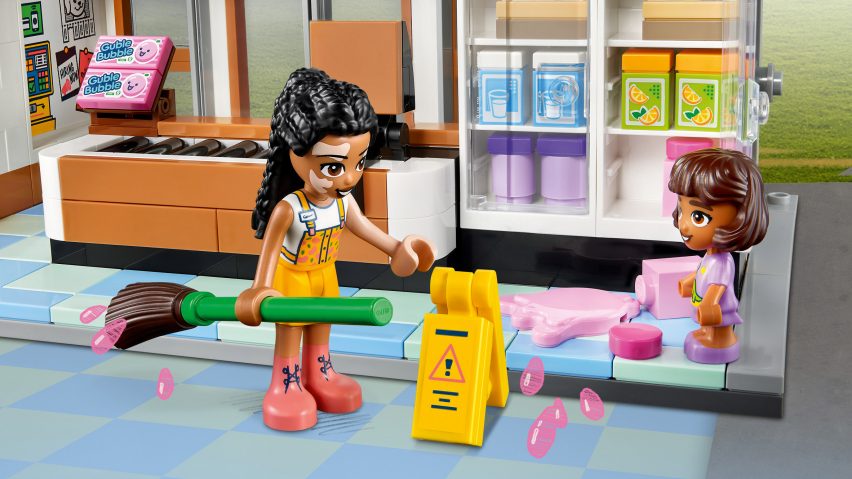Toy brand Lego has added five diverse characters including a girl with the skin condition vitiligo, one with limb difference and another with anxiety to its collection of Lego Friends figures.
Released by the Danish toy manufacturer last month, the new characters have a range of skin tones, physical disabilities and neurodiverse psychological conditions.
"The 2023 Lego Friends Universe includes characters with a wider variety of skin tones, cultural backgrounds, disabilities and neurodiversity, all with authentic personalities and relationships," said Lego.
"This next generation is designed to celebrate diverse friendships in the modern world."
Each new Lego Friends character has its own storyline and capabilities. Liann "is naturally curious and at times a bit impulsive," while Paisley is described by the brand as someone who "sometimes struggles with anxiety" and crafts-lover Fiona has Down's Syndrome.
Meanwhile, Lego said that Autumn – who was born with one limb missing – "is happiest when on her own exploring nature and the outdoors" and Jordin has vitiligo, which gives her skin different-coloured pigments.
While the mini figures cannot be purchased on their own, they can be bought within world-building sets that include an art school, a dog rescue centre and an international school.
The characters also appear in digital format in a video series released on Youtube. They form part of Lego's latest release, which also includes other re-imagined characters.
Recent research conducted by the company found that 68 per cent of children want toys to better reflect real life. Research conducted by Opinium Research for Lego gathered data from 18,000 children aged between six and 12 in 19 countries.
A key takeaway was that the toys needed to be relatable so that children could learn from them and apply their newfound knowledge to their own relationships.
"After an incredible 10 years on Lego Friends, this re-imagination has enabled us to push the boundaries in the reflection of modern, childhood friendships so that children can truly see their experiences reflected in the world around them," said head of product at Lego Friends Tracie Chiarella.
"From the research, it's great to see that kids acknowledge the importance of friendship for their mental health and it's encouraging to hear they want more emotional diversity to be represented in the content they consume and the toys and characters they play with."
The set forms part of Lego Friends, a product range of Lego toys that was created in 2012. The range was originally targeted at girls after Lego found that older girls typically no longer play with Lego's plastic construction bricks.
The Lego Friends line has faced criticism over its gendered approach since it debuted and has since pledged to remove gender bias from its products.
The company has also made moves to make its traditional building bricks more accessible. It created a collection of bricks printed with letters and numbers from the braille alphabet, so that blind and partially sighted children could learn to read as they play.
To keep up with societal changes, it also released a kit for building and programming robots, which was designed to encourage a younger generation to learn how to code.
The images are courtesy of Lego.

